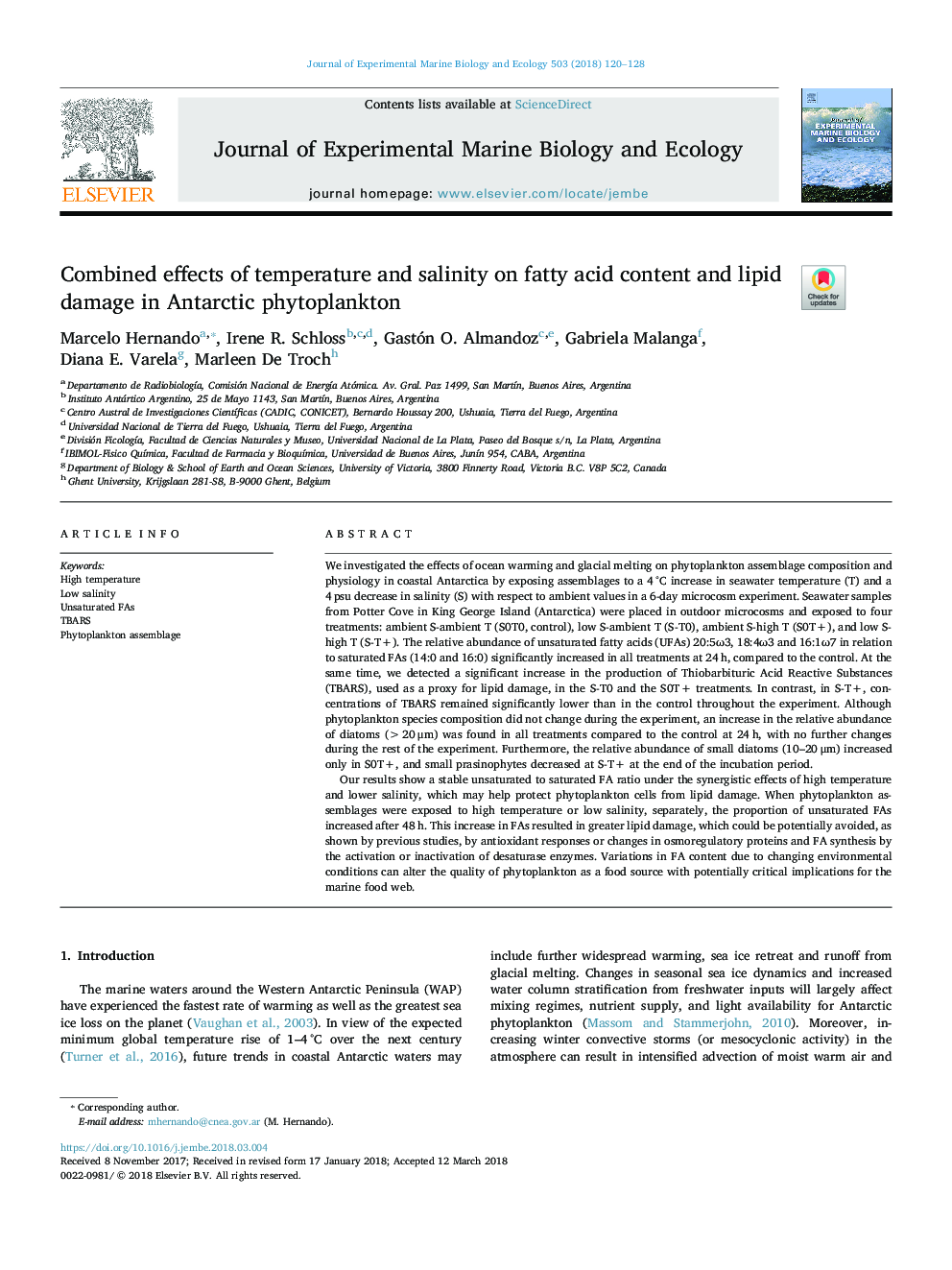| Article ID | Journal | Published Year | Pages | File Type |
|---|---|---|---|---|
| 8848936 | Journal of Experimental Marine Biology and Ecology | 2018 | 9 Pages |
Abstract
Our results show a stable unsaturated to saturated FA ratio under the synergistic effects of high temperature and lower salinity, which may help protect phytoplankton cells from lipid damage. When phytoplankton assemblages were exposed to high temperature or low salinity, separately, the proportion of unsaturated FAs increased after 48â¯h. This increase in FAs resulted in greater lipid damage, which could be potentially avoided, as shown by previous studies, by antioxidant responses or changes in osmoregulatory proteins and FA synthesis by the activation or inactivation of desaturase enzymes. Variations in FA content due to changing environmental conditions can alter the quality of phytoplankton as a food source with potentially critical implications for the marine food web.
Related Topics
Life Sciences
Agricultural and Biological Sciences
Aquatic Science
Authors
Marcelo Hernando, Irene R. Schloss, Gastón O. Almandoz, Gabriela Malanga, Diana E. Varela, Marleen De Troch,
